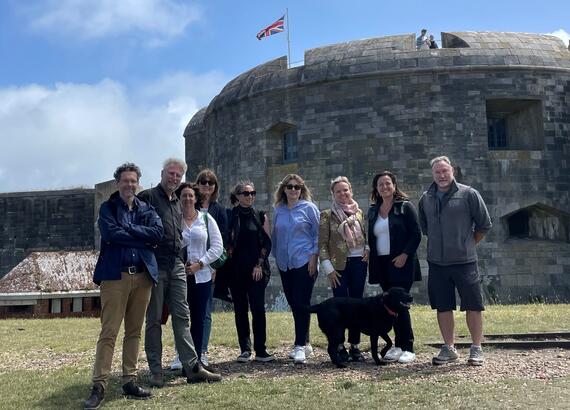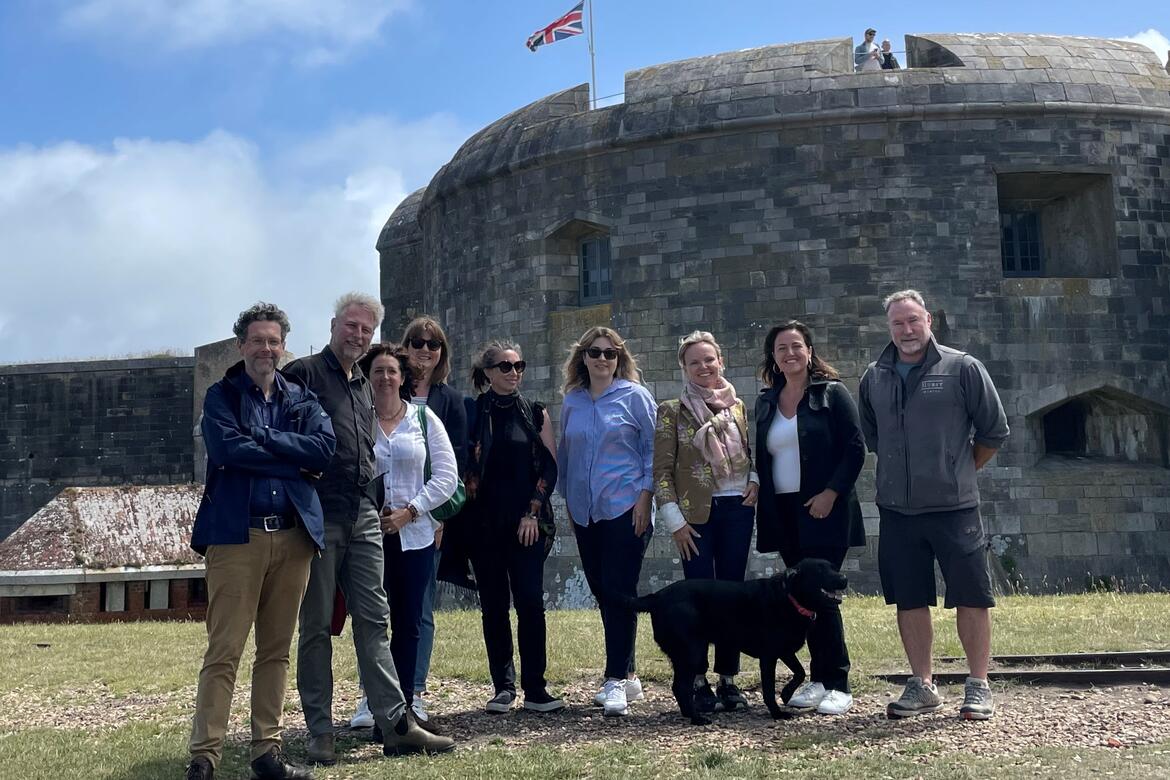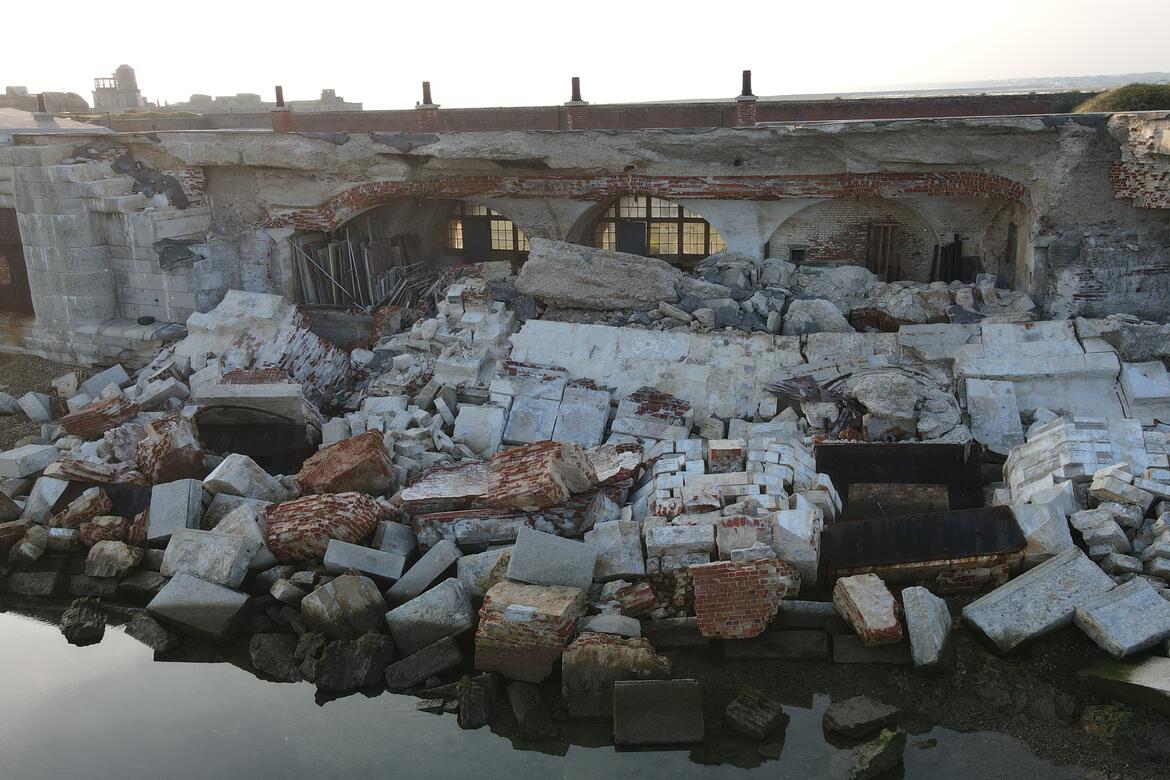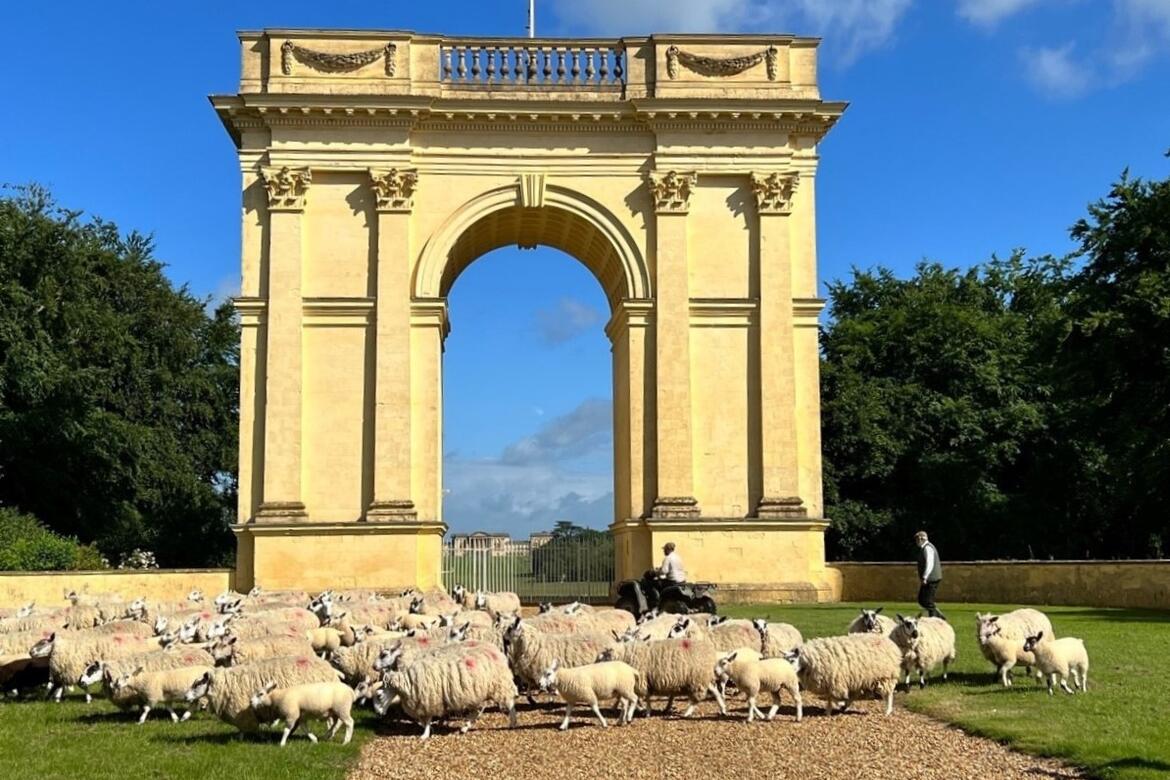Travelogue: Project Milestones and Updates from the United Kingdom

This June, I traveled to Europe to visit World Monuments Fund’s (WMF) affiliate team in the United Kingdom and take a closer look at some of the projects we are leading there.
Since 1995, WMF has completed projects at over 50 sites in Britain and established partnerships with many more through the World Monuments Watch to provide on-site conservation, educational resources, training, and advocacy.
After a wonderful welcome by our team in London, led by Hélène Marie Shafran, WMF Britain (WMFB) Board Chair, and WMFB Executive Director John Darlington, our group headed to the iconic Wellington Arch near Hyde Park for the annual WMF Summer Reception in London. There, I had the chance to meet with members of the WMFB Board of Directors to discuss the exciting projects that we are currently developing in the UK.
The next day, we traveled south to sixteenth-century Hurst Castle in Lymington. Hurst Castle was included in the 2022 World Monuments Watch after a section of the fort collapsed due to rising sea levels and increasing storm surges. The extent of the damage is significant, a reflection of the increasing forces pressuring the structure each day.
WMF is working with English Heritage, the Watch nominator and owners of Hurst Castle, and others around the world to create a virtual classroom to share lessons learned at this site on how to face sea level rise and the impacts of coastal climate change. I was delighted to announce the allocation of $110,000 funding from the Paul Mellon Fund for Architectural Preservation in Great Britain towards this project.
There are many climate change-related threats to heritage sites, including rising sea levels, coastal erosion and flooding, extreme weather events, and hotter environmental conditions. Our projects at places like Hurst Castle will serve as valuable models as we work to increase the resilience and adaptability of sites and communities affected by climate change.
Our group then visited Stowe House in Buckinghamshire, where WMF was active for nearly 15 years between 2002 and 2016. Home to Stowe School, the site provides a spectacular environment for students to enjoy and study. Showcasing stunning craftsmanship and a classic English landscape garden, Stowe House’s charm is unrivaled…except perhaps by the magical Royal Botanic Gardens at Kew, where we stopped upon our return to London to explore one of WMF’s newest projects in the city.
Partnering with Kew Gardens, WMF is developing a project to restore the site’s extraordinary Great Palm House. Built in 1844, it was the first glasshouse of its scale and was designed using techniques borrowed from the shipbuilding industry. As part of our project, we are exploring how to make the glasshouse, whose purpose is to create a warm, humid environment at all times, carbon neutral. Quite a challenge!
WMF’s work across Europe continues to inspire and amaze me, and I am grateful for the hard work led by our affiliates not only in the United Kingdom, but in Spain and Portugal as well. My deepest thanks to Hélène Marie and Jake Shafran, Richard Broyd, Elisabeth de Kergorlay, and the entire team at WMFB for their generous and invaluable support for this trip.
With appreciation,
Bénédicte de Montlaur
President and CEO



